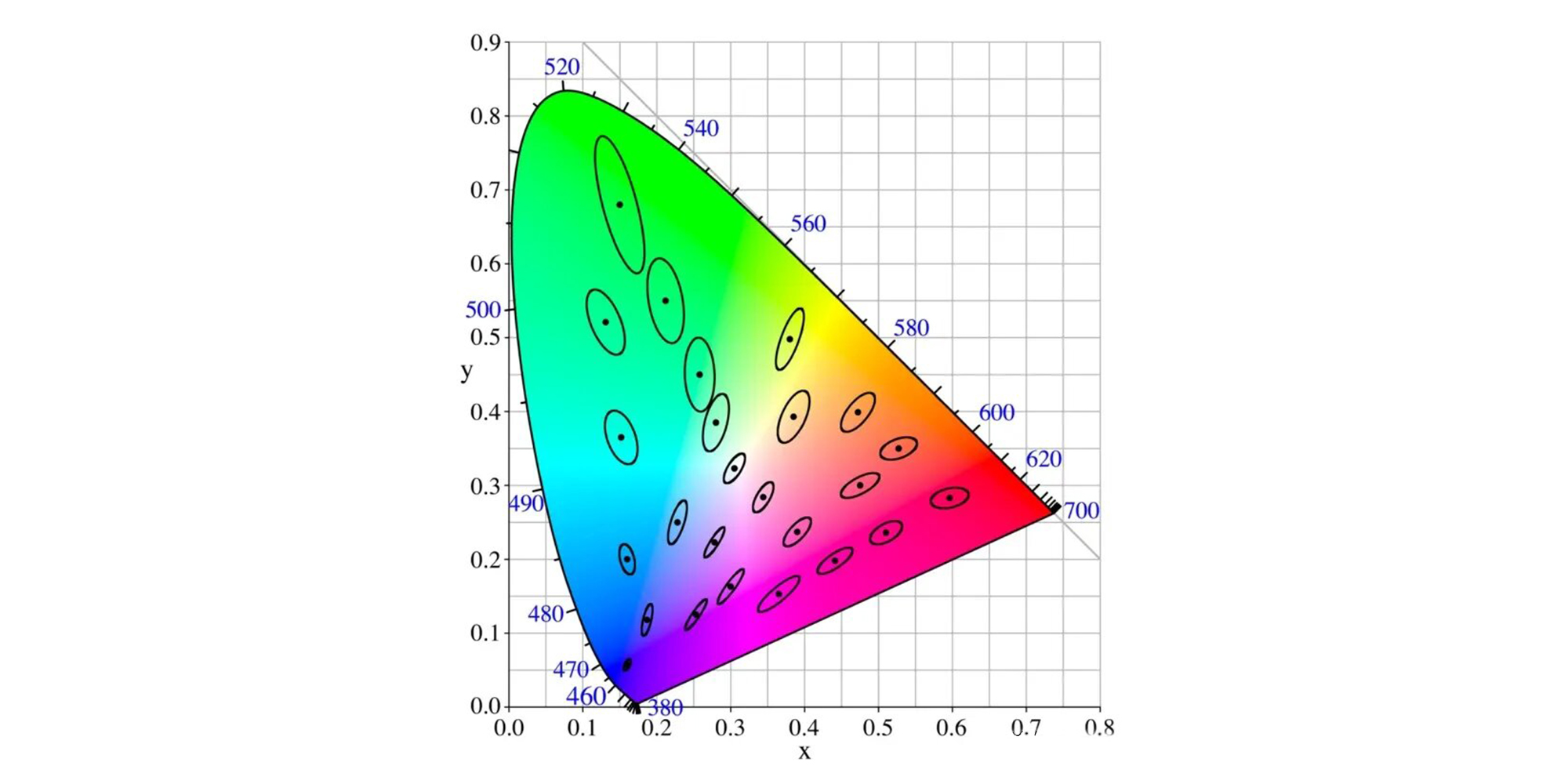When we compare LEDS, we often encounter the problem of color tolerance and chromatic aberration, So today we're going to talk about the difference between chromatic aberration and color tolerance.First, let's introduce a concept:
McAdam's ellipse theory: In 1942, scientist McAdam experimented with 25 colors using relevant principles, measure in approximately 5 to 9 opposite directions for each color point, record the distance between the two points when they were just able to tell the difference in color, the result is ellipses of various sizes and axes, It's called the McAdam ellipse. The McAdam ellipse is usually described in terms of order, which is the standard deviation, the first-order McAdam ellipse refers to the standard deviation of the change of the color matching result that is 1 time away from the target color. In the same way, the meanings of third-order and fourth-order are known
With McAdam's ellipse in mind, let's look at the concept of color tolerance:
Color tolerance, refers to the difference between the X and Y values calculated by the software of the photochromic electric detection system and the standard light source. the smaller value is, the closer the product light color coordinate is to the standard value, the smaller the difference between the light source and the standard spectrum, the higher the accuracy, the more pure the color of the light.
At present, the main color tolerance standards in China mainly include ANSI standard in North America and IEC standard in The European Union. Color tolerance under different standards also has its requirements:
1. Energy Star ANSI C78.376, color tolerance ≤7 SDCM, divided into regions according to LED characteristics.
2. Eu standard ERP, color tolerance ≤6 SDCM, according to the technical requirements to standardize LED division.
3. GB10682-2002, double end fluorescent lamp performance requirements color tolerance ≤5 SDCM, can be used as LED lamp color tolerance requirements reference.

Let's look at the difference between chromatic aberration and color tolerance:
Chromatic aberration: color difference, that is, two light color X, Y coordinate value difference size, the smaller the difference, the smaller the color difference.
Color tolerance: represents the difference between X and Y values of the product and X and Y values of the standard light source. The smaller the distance, the smaller the color tolerance.
McAdam experimentally demonstrated a linear relationship between perceptible chromatic aberration and the standard deviation corresponding to color matching,three times the standard deviation is the perceptible difference in color, If the two color coordinates fall within the second order McAdam ellipse, the human eye will hardly see the difference between them. The difference between the color corresponding to the boundary of order 3 McAdam's ellipse and the center color is the color difference that the human eye can detect, If the product color center happens to be the color tolerance center, So you can use color tolerance to characterize color difference, the greater the color tolerance, the greater the color difference


